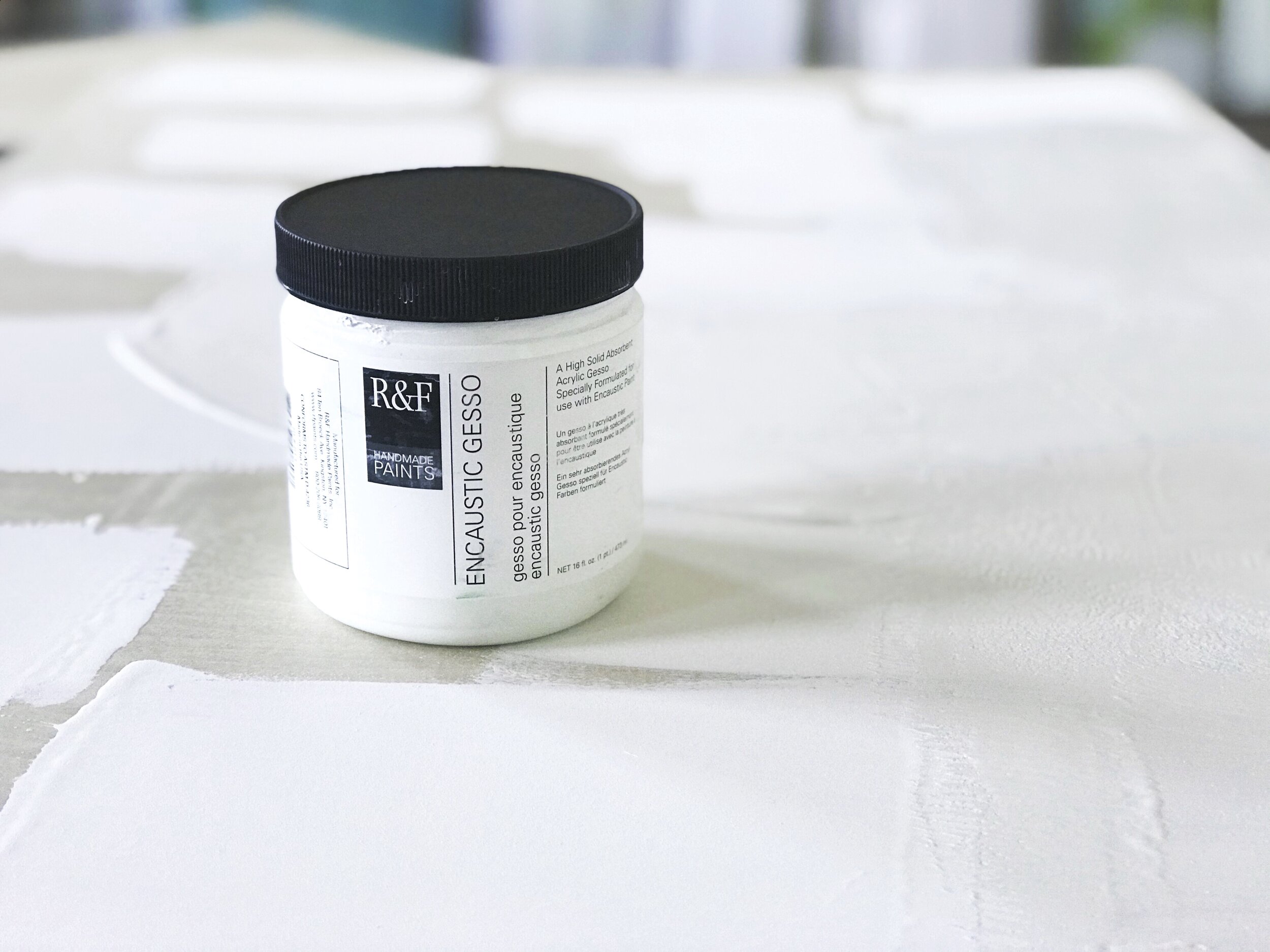Ask Richard: Encaustic Gesso
Richard loves to answer questions. Here he is answering a question from artist Joanna Kidney at the 13th International Encaustic Conference.
In our newest blog series, we chat with founder Richard Frumess to uncover answers to your burning questions about all things R&F. For our inaugural post, the spotlight is on encaustic gesso. R&F developed encaustic gesso in order to provide a ready-made white ground that was porous enough for encaustic to adhere to. With its granular surface, encaustic gesso absorbs and holds encaustic paint exceptionally well.
How much does encaustic gesso increase adhesion? To determine how well encaustic adheres to encaustic gesso we conducted a rigorous test on 38 surfaces and systematically compared the results. Encaustic gesso came out on top with an almost perfect score. Download our comparative chart and learn about the testing methods we used here. Or read What Does Encaustic Adhere to Best here.
Can encaustic gesso be used for oil painting? Yes, and doing so allows you to achieve a very different optical effect. The standard white ground for oil paint is either acrylic gesso or titanium or lead white oil primer. These grounds keep the oil sitting on the surface rather than being absorbed in and give oil paint its greatest depth and gloss.
Encaustic gesso, on the other hand, allows oil to seep down into the pores of the gesso. Having less oil on the surface gives the paint film a slight texture. The effect is a matte finish with brighter colors and less depth.
Can encaustic gesso be used on stretched canvas? Generally speaking, no. Because it has so little binder and so much filler, encaustic gesso does not have the elasticity of oil grounds. Since stretched canvas is always responding to changes in humidity and temperature by expanding and shrinking, a lean binder will have the tendency to crack.
Can you tint encaustic gesso? Yes. I would recommend using a fluid acrylic. It will not allow the addition of too much acrylic, which would take away the gesso's porosity. Since it is the same chemical it will mix in more uniformly than adding another type of medium, which might react to the acrylic in the encaustic gesso.
What is the difference between encaustic gesso and Ampersand's Encausticbord? Our encaustic gesso can be used just like any other primer, which allows you to apply it to the support of your choice. But it also seemed logical to partner with our good friends at Ampersand and use their refined technology to create brush mark-free, uniformly smooth, encaustic gesso on panels.
Can Encaustic Gesso substitute for the traditional rabbitskin glue gesso? Throughout history, the principal white ground for easel painting was glue gesso (Italian for "gypsum"), a mixture of animal glue with gypsum or chalk. It created a velvety smooth porous surface.
Preparing the gesso and then laying 10 to 12 layers of it onto the panel is a laborious, finicky, tedious all-day task. It is a process to be loved either by masochists or by those who want to replicate the traditional craftsman-like approach to painting. In my painting days, I was one of the latter (and perhaps a bit of the former).
With encaustic gesso, you don't have to turn yourself into a medieval craftsman in order to achieve similar qualities. Two coats right out of the jar (drying in between) are enough to give you a suitable ground for encaustic, egg tempera, and oil painting.
If your encaustic gesso gets thick because you haven't used it in a while, can you add some water to thin it? If so, how much can you add without negatively affecting the gesso? If this occurs, make sure not to stir in any dried gesso, then add just enough water to bring it back to its original consistency. Adding too much water could negatively affect the leveling properties of the gesso as it dries, preventing your brush strokes from evening out.
R&F has always said to stay away from acrylic gesso as ground for encaustic because it is not porous enough. But the binder for encaustic gesso is acrylic, so what's up with that? Acrylic gesso is not absorbent so encaustic can detach from it over time. There are other suitably porous grounds, but few of them -- such as wood, low fired terra cotta, or textured metal -- are white.
The difference between encaustic and acrylic gesso is in the ratio of acrylic binder to the gesso solids (inert particles like chalk, kaolin, or marble dust + Titanium White). The binder itself is not the issue. No binder -- whether acrylic, vinyl acetate, oil, wax, casein, or gum Arabic -- is absorbent. So, the greater the ratio of binder to solid (like acrylic gesso), the smoother, less absorbent, less sandable, but more flexible the ground will be. The lower the ratio of binder and higher ratio of solids (as with encaustic gesso), the more granular and porous, more absorbent, more sandable, but less flexible the ground will be.
It's not the binder but the percentage of binder that matters in this case. And if you want to read more about this, you can download Myths and Realities about Encaustic Gesso.
If you have questions for Richard, email them to dietlind@rfpaints.com and we’ll see if we can get you answers!
Stay healthy. And keep painting.


